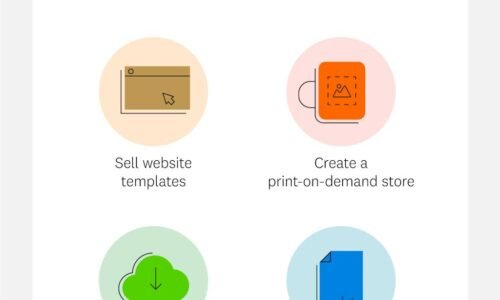In today’s fast-paced world, managing your finances can feel like juggling flaming torches while riding a unicycle. Between bills, subscriptions, and those sneaky coffee shop splurges, keeping track of your money is no small feat. Enter budget apps—digital tools designed to simplify your financial life, help you save, and bring clarity to your spending habits. As someone who’s spent years diving deep into personal finance tools and testing dozens of apps, I’m here to break down why budget apps are a game-changer, how to pick the right one, and what to expect in 2025. Whether you’re a budgeting newbie or a seasoned saver, this guide will help you navigate the world of budget apps with confidence.
Why Budget Apps Are Essential in 2025
The financial landscape has shifted dramatically in recent years. With inflation fluctuating, subscription services multiplying, and digital payments making spending easier than ever, it’s no wonder people are turning to budget apps to stay on top of their finances. These apps do more than just track your spending—they analyze your habits, set goals, and even nudge you toward smarter decisions. According to a 2024 survey by Statista, 62% of Americans used a budgeting or financial planning app at least once a month, a number that’s only expected to grow in 2025 as more people prioritize financial wellness.
Budget apps shine because they’re accessible, user-friendly, and packed with features that manual spreadsheets can’t match. They sync with your bank accounts, categorize transactions in real-time, and provide insights that help you spot leaks in your budget. Plus, with advancements in AI and machine learning, modern apps are smarter than ever, offering personalized recommendations and predictive forecasting. Whether you’re saving for a dream vacation or paying off student loans, a good budget app can be your financial co-pilot.
What to Look for in a Budget App
Not all budget apps are created equal. With hundreds of options flooding app stores, choosing the right one can feel overwhelming. Here are the key features to prioritize when selecting a budget app in 2025:
- Ease of Use: A clean, intuitive interface is non-negotiable. You shouldn’t need a finance degree to navigate your app.
- Bank Syncing: Look for apps that securely connect to your bank accounts and credit cards for real-time updates.
- Customization: The best apps let you tailor categories, set personalized goals, and adjust budgets to fit your lifestyle.
- Security: Robust encryption and two-factor authentication are must-haves to protect your financial data.
- Reporting Tools: Detailed charts, graphs, and spending breakdowns help you understand your habits at a glance.
- Cross-Platform Access: Apps that work seamlessly on your phone, tablet, and desktop ensure you’re never out of the loop.
- Cost: While many apps offer free versions, premium features often come with a subscription. Weigh the benefits against the price.
In 2025, expect budget apps to lean heavily into AI-driven insights and gamification. Apps like YNAB (You Need A Budget) and PocketGuard are already experimenting with features that reward users for hitting savings milestones or sticking to their budgets, making money management feel less like a chore.
Top Budget Apps to Watch in 2025
After testing countless apps and analyzing user reviews, I’ve narrowed down the top five budget apps that stand out for their features, reliability, and value. Below is a comparison table to help you see how they stack up.
| App Name | Best For | Key Features | Cost | Platforms |
|---|---|---|---|---|
| YNAB | Goal-oriented budgeting | Zero-based budgeting, goal tracking, detailed reports | $14.99/month or $99/year | iOS, Android, Web |
| Mint | Beginners | Free tracking, auto-categorization, credit score monitoring | Free (with ads) | iOS, Android, Web |
| PocketGuard | Overspenders | “In My Pocket” feature, debt payoff plans, subscription tracking | Free; Premium $7.99/month | iOS, Android |
| Goodbudget | Couples and families | Envelope budgeting, shared budgets, debt tracking | Free; Plus $8/month | iOS, Android, Web |
| Monarch Money | Advanced users | Investment tracking, net worth monitoring, collaboration tools | $14.99/month or $99.99/year | iOS, Android, Web |
YNAB: The Gold Standard for Intentional Budgeting
YNAB is a favorite among budgeting enthusiasts for its zero-based budgeting philosophy, which assigns every dollar a job. Its strength lies in helping users plan proactively rather than just track spending. The app’s learning curve can be steep, but its robust tutorials and community support make it worth the effort. In 2025, YNAB is rolling out enhanced AI features to predict cash flow based on your spending patterns, making it ideal for those who want to stay one step ahead.
Mint: The Free, All-in-One Solution
Mint has been a household name for years, and for good reason. It’s free, easy to use, and packed with features like bill tracking, credit score monitoring, and customizable budgets. While ads can be a downside, Mint’s seamless bank syncing and clear visualizations make it a great starting point for beginners. Expect Mint to integrate more subscription management tools in 2025, helping users tackle the growing problem of recurring charges.
PocketGuard: Your Spending Safety Net
PocketGuard is designed to prevent overspending by showing you how much disposable income you have after bills and savings—“In My Pocket,” as the app calls it. Its subscription tracker is a standout, flagging unused memberships that drain your wallet. For 2025, PocketGuard is rumored to be adding voice-activated commands, perfect for users who want hands-free budgeting on the go.
Goodbudget: Budgeting with a Partner
Goodbudget brings the classic envelope budgeting system into the digital age, making it a top pick for couples or families. You allocate funds to virtual “envelopes” for different categories, and the app syncs across devices so everyone stays on the same page. Its free version is generous, but the Plus plan unlocks unlimited envelopes and multi-device syncing. In 2025, Goodbudget plans to enhance its debt repayment tools, appealing to users tackling loans or credit card balances.
Monarch Money: The Power User’s Choice
Monarch Money is a newer player but has quickly gained traction for its sleek design and comprehensive features. It’s perfect for those who want to track investments, net worth, and budgets in one place. The app’s collaboration tools make it easy to share financial plans with a partner or advisor. In 2025, Monarch is expected to introduce predictive analytics, helping users anticipate expenses like tax bills or car repairs.
How to Get Started with a Budget App
Ready to dive in? Here’s a step-by-step guide to setting up your budget app and making it work for you:
- Choose Your App: Use the comparison table above to pick an app that aligns with your goals and tech preferences.
- Link Your Accounts: Securely connect your bank accounts, credit cards, and investment accounts. Most apps use bank-grade encryption, so your data stays safe.
- Set Your Budget: Decide on a budgeting method—zero-based, 50/30/20 (needs, wants, savings), or envelope-based—and input your income and expenses.
- Customize Categories: Tailor spending categories to match your lifestyle, like “Pet Supplies” or “Streaming Services.”
- Track and Adjust: Check the app daily or weekly to monitor your spending. Adjust your budget as needed to stay on track.
- Explore Features: Dig into reports, goal-setting tools, and alerts to maximize the app’s value.
Pro tip: Start small. If you’re new to budgeting, focus on tracking one or two categories, like groceries or dining out, before overhauling your entire financial system. Consistency is key.
The Benefits of Using a Budget App
Budget apps do more than just crunch numbers—they empower you to take control of your financial future. Here are some of the biggest perks:
- Clarity: See exactly where your money goes each month, no guesswork required.
- Savings: Identify wasteful spending and redirect those dollars toward savings or debt repayment.
- Stress Relief: Knowing your bills are covered and your goals are on track brings peace of mind.
- Goal Achievement: Whether it’s buying a home or taking a sabbatical, budget apps help you plan and save for big dreams.
- Time Savings: Automating tasks like transaction categorization frees up time for other priorities.
A 2024 study by the National Endowment for Financial Education found that people who used budgeting apps were 30% more likely to stick to their financial goals than those who didn’t. That’s a powerful testament to the impact of these tools.
Challenges and How to Overcome Them
No tool is perfect, and budget apps come with their own hurdles. Here’s how to tackle common challenges:
- Learning Curve: Some apps, like YNAB, require time to master. Lean on tutorials, forums, or YouTube guides to get up to speed.
- Subscription Fatigue: Premium features often come with a cost. Stick to free versions if your budget is tight, or commit to a paid app only if the features justify the price.
- Data Privacy Concerns: Worried about security? Choose apps with strong encryption and read their privacy policies. Apps like Mint and YNAB have solid track records.
- Inconsistent Categorization: Auto-categorization isn’t foolproof. Review transactions weekly to ensure accuracy.
- Motivation Wanes: Budgeting can feel tedious. Set small, achievable goals and celebrate wins to stay motivated.
What’s Next for Budget Apps in 2025
The budget app market is evolving rapidly, and 2025 promises exciting developments. AI will play a bigger role, with apps offering hyper-personalized advice based on your spending history. For example, imagine an app that notices you’re spending $50 a month on unused subscriptions and suggests alternatives. Gamification is another trend to watch—apps are adding rewards, badges, and challenges to make budgeting fun. Integration with wearable tech, like smartwatches, is also on the horizon, letting you check your budget with a wrist tap.
Sustainability is another emerging focus. Some apps are starting to track the environmental impact of your spending, like carbon emissions from travel or shopping habits. This aligns with growing consumer demand for eco-conscious financial tools.
Tips for Maximizing Your Budget App Experience
To get the most out of your budget app, keep these strategies in mind:
- Check In Regularly: Spend five minutes a day or 20 minutes a week reviewing your app to stay on top of your finances.
- Set Realistic Goals: Aim for progress, not perfection. Saving $50 a month is better than nothing.
- Use Alerts: Enable notifications for overspending or upcoming bills to avoid surprises.
- Involve Your Partner: If you share finances, use apps with collaboration features to align on goals.
- Stay Flexible: Life changes, and so should your budget. Update your app to reflect new expenses or income.
Final Thoughts on Budget Apps in 2025
Budget apps are more than just tools—they’re gateways to financial clarity and confidence. By choosing the right app, setting clear goals, and staying consistent, you can transform how you manage your money. Whether you’re drawn to YNAB’s disciplined approach, Mint’s simplicity, or Monarch Money’s advanced features, there’s a budget app out there to fit your needs. As we move into 2025, these apps are only getting smarter, making it easier than ever to save, plan, and thrive.
So, what are you waiting for? Download a budget app today, link your accounts, and take the first step toward mastering your money. Your future self will thank you.


